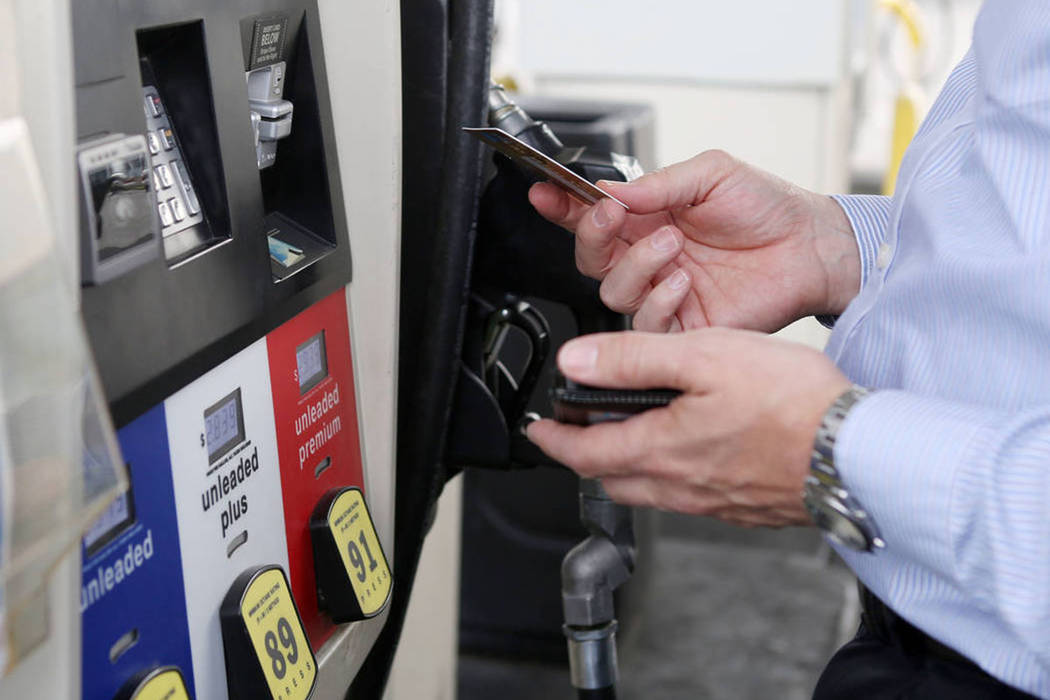U.S. gas price sets record for year
With a four-cent jump on the week, Monday’s national gas price average sets a high for the year at $2.88.
This average may only be seven cents more than a year ago, but it is nearly 20 cents more than a month ago and 63 cents more expensive than at the beginning of the year, AAA said in its weekly news release providing details.
“Compared to the beginning of this year, motorists have definitely felt an increasing squeeze on their wallets at the pump,” said Jeanette Casselano, AAA spokeswoman. “These increases mean Americans are having to work more to afford to fill up their gas tanks. AAA found that Americans must work 22% longer than at the start of the year to buy one gallon of unleaded gasoline - that’s 7.3 minutes compared to 5.76 minutes in January.
All prices in the region have increased on the week, with Alaska and Nevada seeing the largest gains at 9 cents each.
The nation’s top 10 largest weekly increases are Utah (+13 cents), Delaware (+12 cents), Rhode Island (+10 cents), Idaho (+9 cents), Massachusetts (+9 cents), Alaska (+9 cents), Nevada (+9 cents), New Jersey (+8 cents), Connecticut (+8 cents) and West Virginia (+8 cents).
Motorists in the West Coast region are paying the highest pump prices in the nation, with all of the region’s states landing on the nation’s top 10 most expensive list. California ($4.08) and Hawaii ($3.62) are the most expensive markets. Washington ($3.51), Nevada ($3.43), Oregon ($3.40), Alaska ($3.36) and Arizona ($3.12) follow.
The nation’s top 10 least expensive markets are Alabama ($2.51), Mississippi ($2.53), Louisiana ($2.54), Arkansas ($2.56), South Carolina ($2.56), Missouri ($2.58), Oklahoma ($2.61), Tennessee ($2.62), Texas ($2.62) and Kansas ($2.63).
In Nevada, a survey by gasbuddy.com listed the range of gas prices on Monday. They showed $3.03 to $3.39 in Pahrump, $3.59 to $3.79 in Tonopah and $3.23 to $3.39 in Beatty. In Las Vegas, the average price was $3.39 per gallon.
The U.S. Energy Information Administration’s recent weekly report for the week ending on April 19 showed that West Coast gasoline stocks fell for a sixth consecutive week by approximately 300,000 barrels from the previous week and now sit at 27.9 million barrels. If ongoing planned and unplanned refinery maintenance continues throughout the region, the West Coast may see continued price volatility and shrinking gasoline stocks.
Gasoline stocks saw a substantial 1.8 million bbl draw, dropping levels to sit just above the 80 million bbl mark. This is a level to which the region has been accustomed as of late and is 2.2 million bbl less than this time last year. However, regional refinery utilization increased to 92.9% – the highest of any region in the country – which could help to contribute to builds in stocks in coming weeks.
One week after the U.S. State Department announced the end of waivers for countries to import oil from Iran, increasing crude oil prices and pump prices show no signs of slowing down, AAA said in its statement Monday.















